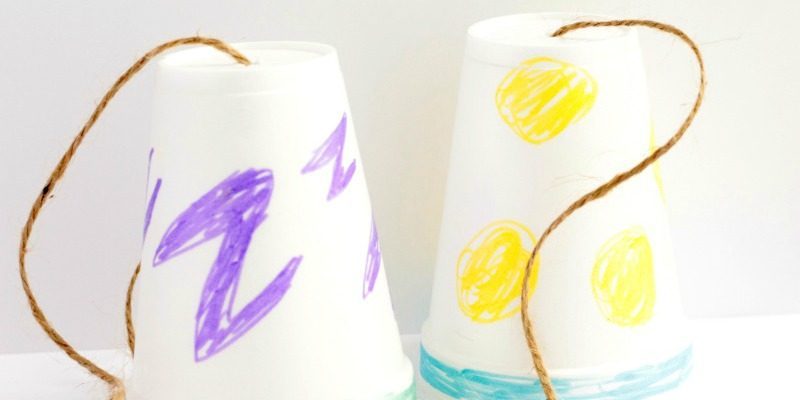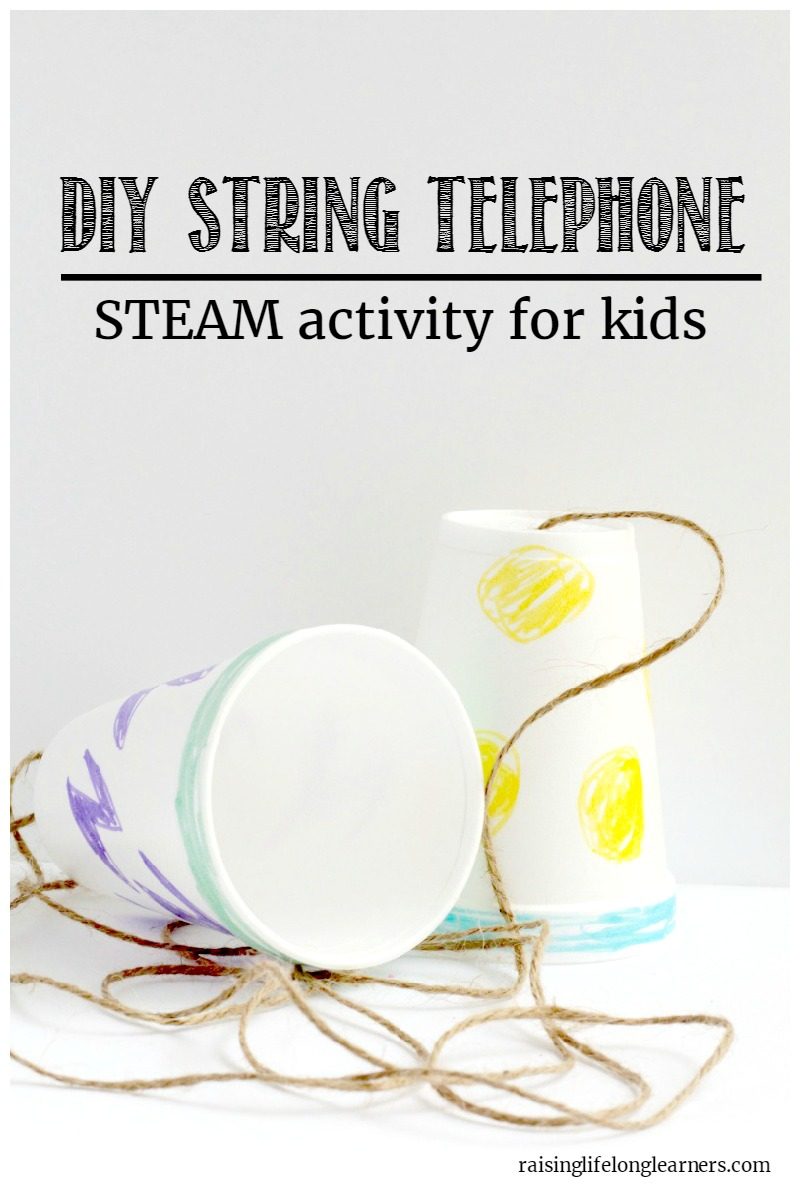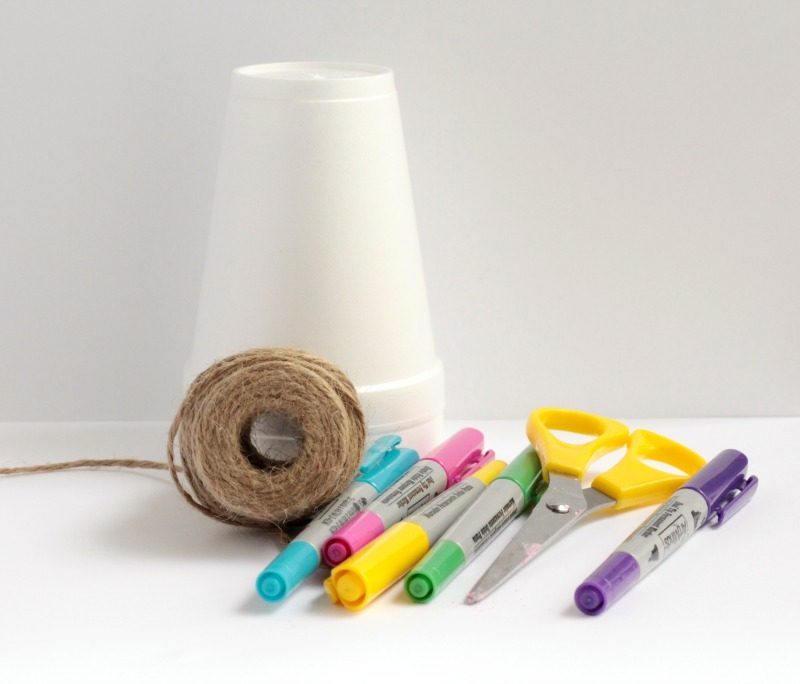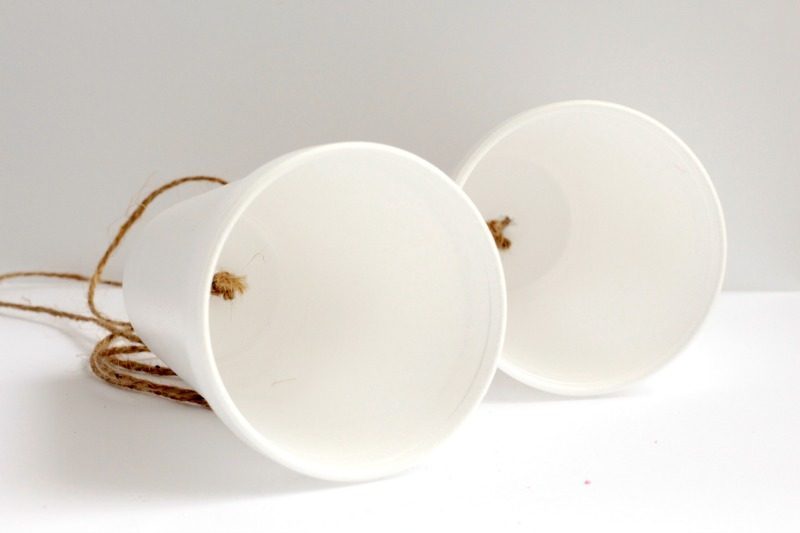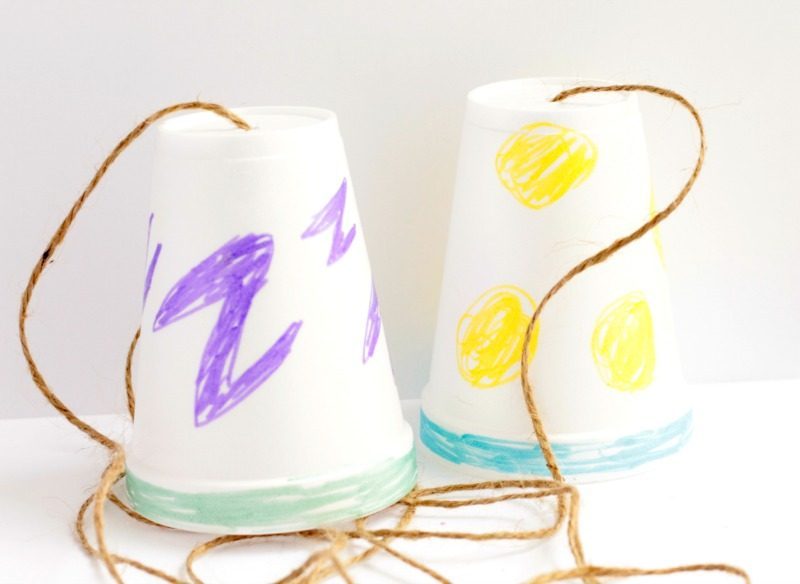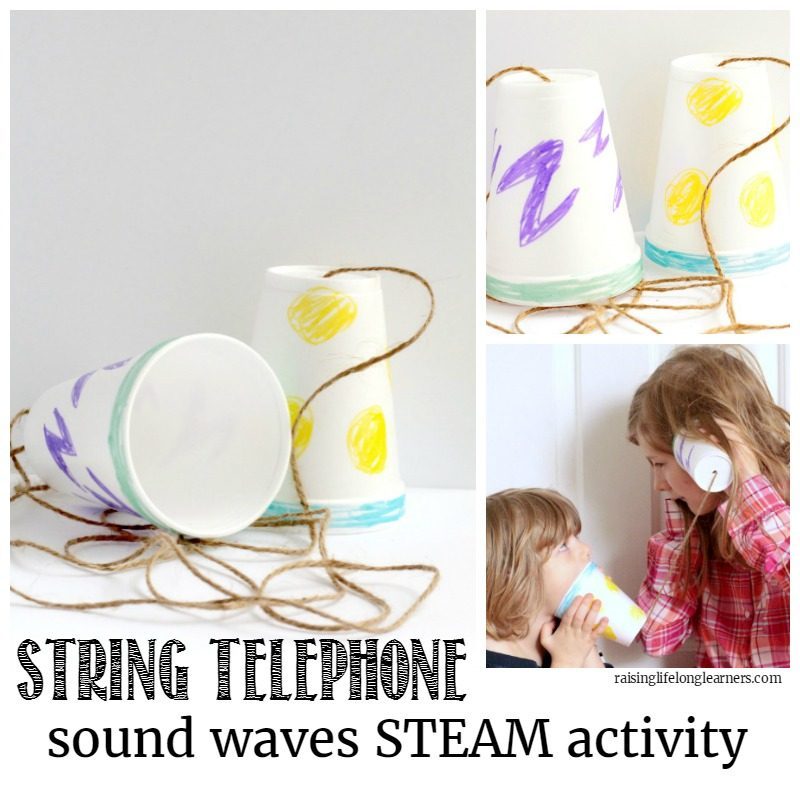String Telephone Explanation: How Sound Waves Travel
Learn all about sound in this super-fun science twist on the classic tin can telephone activity. This version is even more kid-friendly because it uses Styrofoam cups. After making your string telephone, read the string telephone explanation with your kids to discover why it works!
String Telephone Explanation: How Sound Waves Travel
Learn how sound waves travel in this super-fun science twist on a classic kid’s activity!
You’ll need just a few things for this project:
Use the scissors to poke a little hole in the bottom of each cup.
String a piece of twine between the cups. Use a long piece of string to help the sound travel farther.
Tie a knot in the end of the string to keep it in the cup.
Decorate the cups if desired.
One person can hold the phone up to their ear and the other person can talk into the other cup. Keep the string tight or the sound waves won’t travel correctly.
String Telephone Explanation
Sound waves are created when sounds make vibrations in the air. In this activity, your voice vibrates the air inside the cup, which are then transferred to the bottom of the cup. The bottom of the cup passes the sound waves to the string, and so on to the other cup. You can hear surprisingly far using a string telephone if help the right way!
If the string is kept tight, the sound waves will travel. If the string is loose, the sound is less. This is because the lose string causes the vibrations to travel all around rather than directly down the string. Try experimenting with different lengths of string, types of string, and types of cups to see which produces the best sound over the longest distance.
Old landline phones were created using the same principle as a string telephone. The sound waves are turned into an electrical signal that can travel much farther than a simple string.
What other sound activities can you try with your kids after doing this one? Share your ideas with us!

